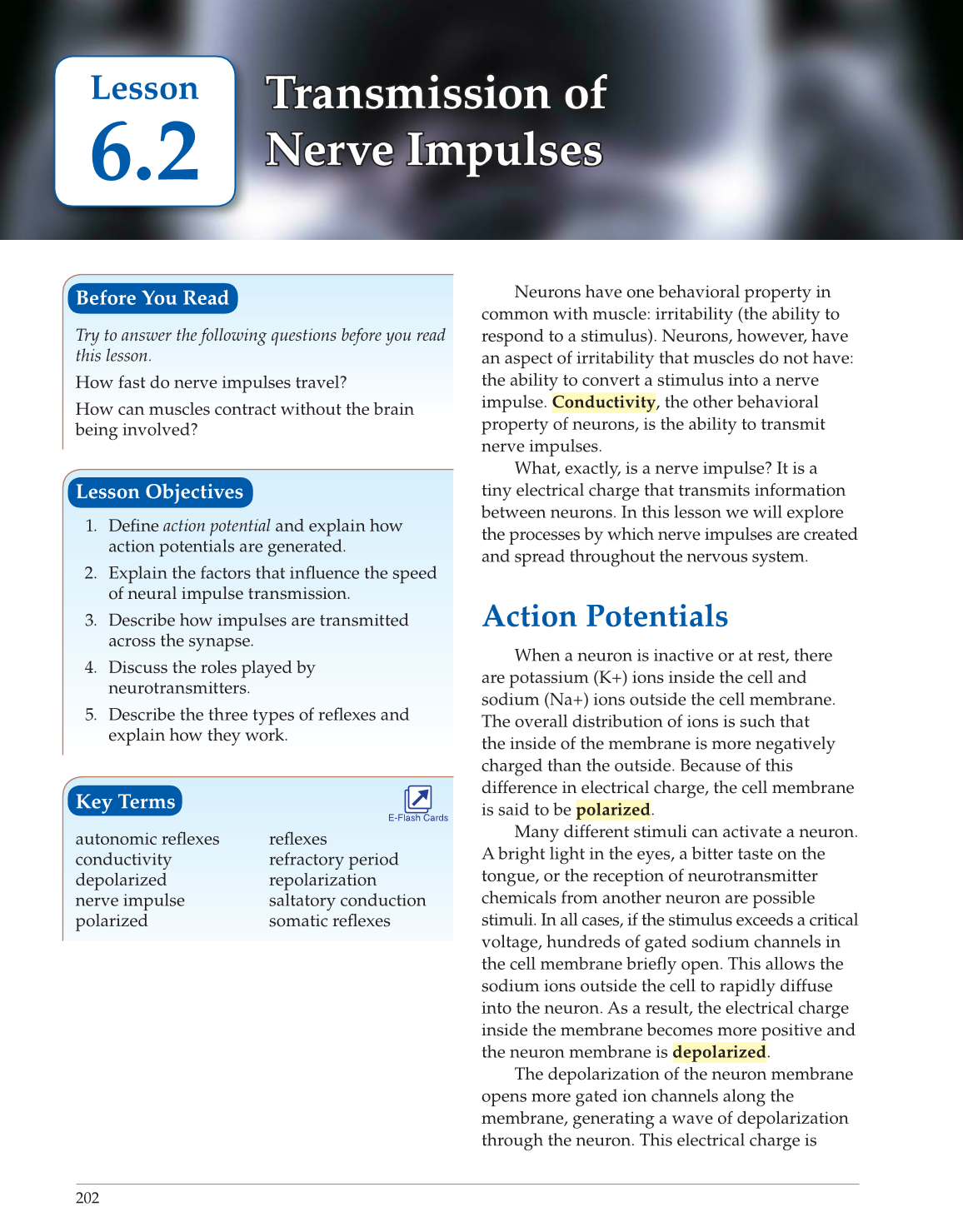202
Lesson
Neurons have one behavioral property in
common with muscle: irritability (the ability to
respond to a stimulus). Neurons, however, have
an aspect of irritability that muscles do not have:
the ability to convert a stimulus into a nerve
impulse. Conductivity, the other behavioral
property of neurons, is the ability to transmit
nerve impulses.
What, exactly, is a nerve impulse? It is a
tiny electrical charge that transmits information
between neurons. In this lesson we will explore
the processes by which nerve impulses are created
and spread throughout the nervous system.
Action Potentials
When a neuron is inactive or at rest, there
are potassium (K+) ions inside the cell and
sodium (Na+) ions outside the cell membrane.
The overall distribution of ions is such that
the inside of the membrane is more negatively
charged than the outside. Because of this
difference in electrical charge, the cell membrane
is said to be polarized.
Many different stimuli can activate a neuron.
A bright light in the eyes, a bitter taste on the
tongue, or the reception of neurotransmitter
chemicals from another neuron are possible
stimuli. In all cases, if the stimulus exceeds a critical
voltage, hundreds of gated sodium channels in
the cell membrane briefl y open. This allows the
sodium ions outside the cell to rapidly diffuse
into the neuron. As a result, the electrical charge
inside the membrane becomes more positive and
the neuron membrane is depolarized.
The depolarization of the neuron membrane
opens more gated ion channels along the
membrane, generating a wave of depolarization
through the neuron. This electrical charge is
6.2
T ransmission of Transmission of
Nerve Nerve ImpulsesImpulses
Before You Read
Try to answer the following questions before you read
this lesson.
How fast do nerve impulses travel?
How can muscles contract without the brain
being involved?
Lesson Objectives
1. Defi ne action potential and explain how
action potentials are generated.
2. Explain the factors that infl uence the speed
of neural impulse transmission.
3. Describe how impulses are transmitted
across the synapse.
4. Discuss the roles played by
neurotransmitters.
5. Describe the three types of refl exes and
explain how they work.
Key Terms
autonomic refl exes
conductivity
depolarized
nerve impulse
polarized
refl exes
refractory period
repolarization
saltatory conduction
somatic refl exes
E-Flash Cards
